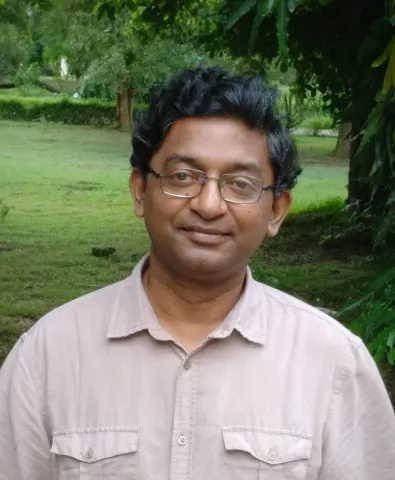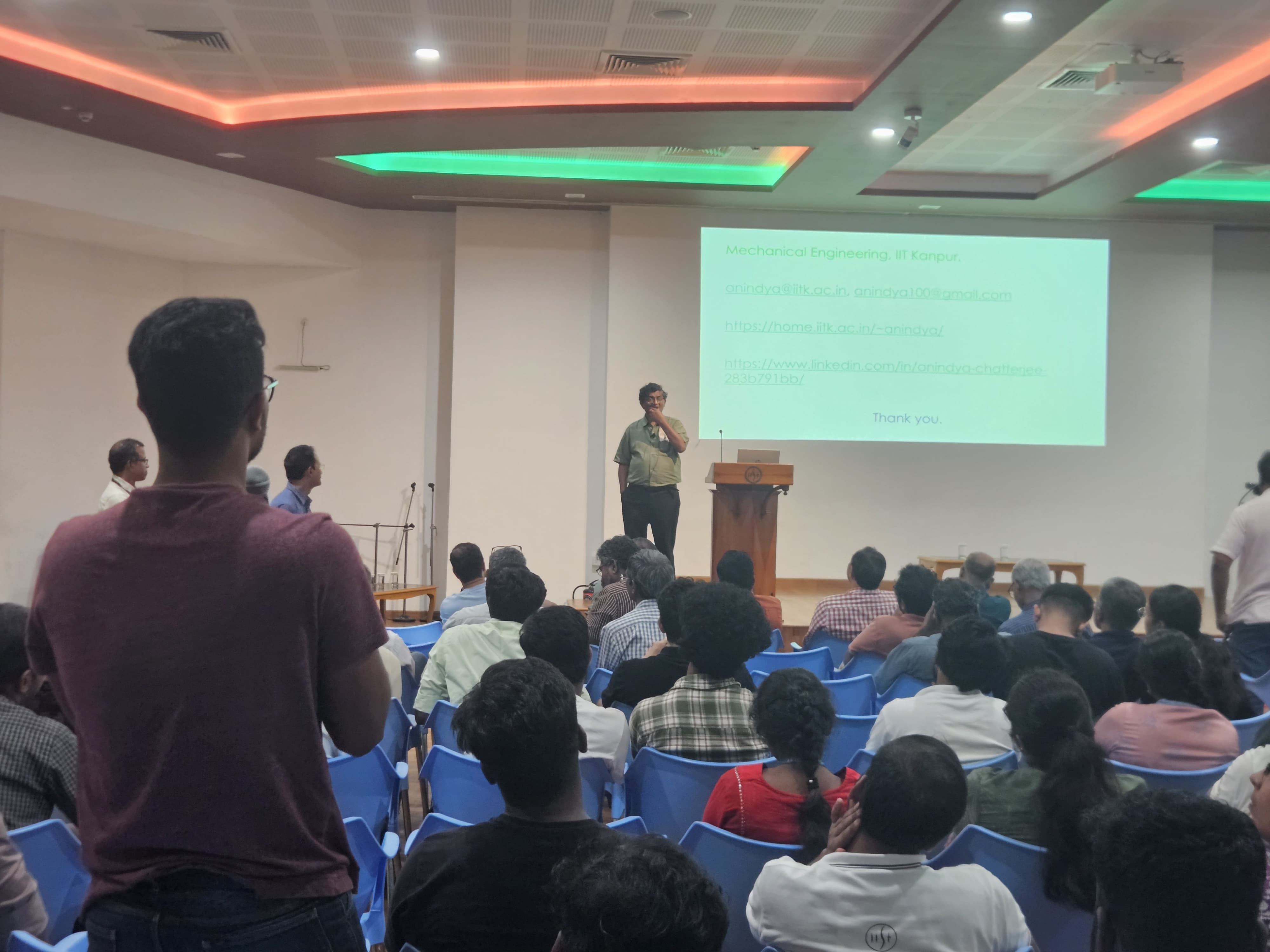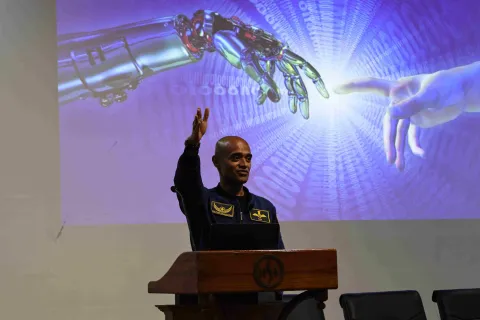The IIST Colloquium Series is a regular forum that brings together students, faculty, and staff from different academic and research backgrounds. It features talks by leading researchers from India and abroad on a wide range of topics, including science, engineering, space science, and interdisciplinary fields. Unlike departmental seminars, these talks are meant to be broadly accessible and of general interest. The series encourages interaction with visiting experts, promotes the exchange of new ideas, and inspires future collaborations.
Recent / Upcoming Colloquium
Colloquium on New Paradigms for Technical Education in India: AI and Scale
- 26-11-2025
- 15:30
About the Speaker - Prof. Anindya Chatterjee is a mechanical engineer with an undergraduate degree from IIT Kharagpur, masters degrees in applied mechanics and applied mathematics from the University of Florida, a PhD from Cornell University, and postdoc work at Penn State University. He spent a year, just out of college, working for Telco (now Tata Motors) in Jamshedpur. He joined the Indian Institute of Science in 2000, moved to IIT Kharagpur in 2009, and to IIT Kanpur in 2012.
Abstract - The Indian higher technical education faces some significant new challenges. I will speak about two of them. One is the growth of Artificial Intelligence (AI), and the other is one of scale: increasing enrollments, huge numbers of applicants, growing complexity and difficulty of tasks that faculty members are expected to excel on. While the future is unknown, some trends seem clear and can be extrapolated. With this view, I will present my understanding of the fundamental ways in which AI will affect engineering work, how we can adapt our teaching philosophy to help prepare our STEM students for such work, what the global aspects of scale seem to be, how it might affect us, and how our teachers and researchers in higher educational institutions might try to improve their overall effectiveness and contribution.
Since the range of possibilities is large, I will structure my talk using the following five points:
- AI is coming and it will change the workplace.
- We must inculcate broad useful transferable skills. Those are hard for AI to copy.
- Our demographics promise huge challenges of scale.
- There is an international context to that scale.
- We must scale up our effectiveness. We need work amplification.





